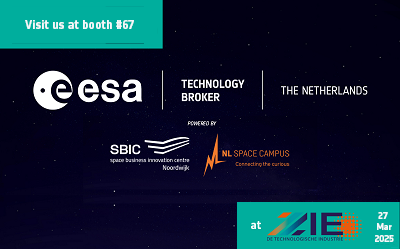
Today most believe the credo: “the more data the better”.
The question is how to extract intelligence from vast data series and how to translate this into value. This is where Survey Intelligence comes in: the ESA BIC start-up helps its clients to visualize, identify and understand their data. The company was established in 2018 with the purpose of developing software and services to analyze time-series for the benefit of the energy sector.
Maud, one of the co-founders, clarifies that the statistical algorithms they have developed can basically be applied to any time-series. The possible applications are countless, ranging from analyzing heart beats to stock market prices. For the moment Survey Intelligence is limiting itself to the energy sector. It is a very exciting time to target this market: digital technologies and data analytics are transforming the oil and gas industry to get more efficient. But the major challenge is, of course, the transformation to renewable energy. Many of the knowledge and expertise used for conventional energy sources can help the transition into green energy.
From a qualitative to a quantitative assessment of seismic data
One of the services Survey Intelligence has developed for the energy sector is a tool to QC seismic data in a quantitative manner. Data gathered through seismic surveys allow geoscientists to visualize the subsurface of the earth and is one of the most essential components of successful oil & gas exploration and production.
Reda, Survey Intelligence’s geoscientist with more than 25 years’ experience in the oil & gas industry, explains that the qualitative assessment of seismic data is becoming more problematic as the amount of available data has grown exponentially. Survey Intelligence develops tools that automatically extract an understanding of the quality of seismic data and its possible applications. They do so in a quantifiable manner in order to make it visible to all, but also easy to reproduce and archive for the future.
Many potential applications
Survey Intelligence does not just limit itself to seismic data. Maud and Reda believe that there are many potential applications of earth observation data when using innovative geo-statistical methods for its interpretation. The current processing of InSAR data, for example, reveals the state of ground deformation but does not say anything about its cause. There is an assumption that the observed deformation is due to subsidence. However, subsidence is the result of complex phenomena that need to be differentiated. They also vary both in space and time and are the effect of several trigger mechanisms combined together.
In the energy sector information on ground deformation is used for monitoring reservoir integrity: not just hydrocarbon reservoirs, but also natural reservoirs for the purpose of geothermal energy and underground CO2 storage. This reservoir management is vital as errors can cause fatal accidents. The Survey Intelligence solution integrates remote sensing data with geological modeling to identify distinctive geological trigger mechanisms.
Maud and Reda are very excited to be part of the ESA BIC program. Since they started in January, they have discovered a lot of synergy between technologies used in the oil & gas and space industries and they foresee the vast potential for the integration of remote sensing data and geosciences. Survey Intelligence aims to become a major provider of data intelligence to an evolving energy sector within the next 5 years.


